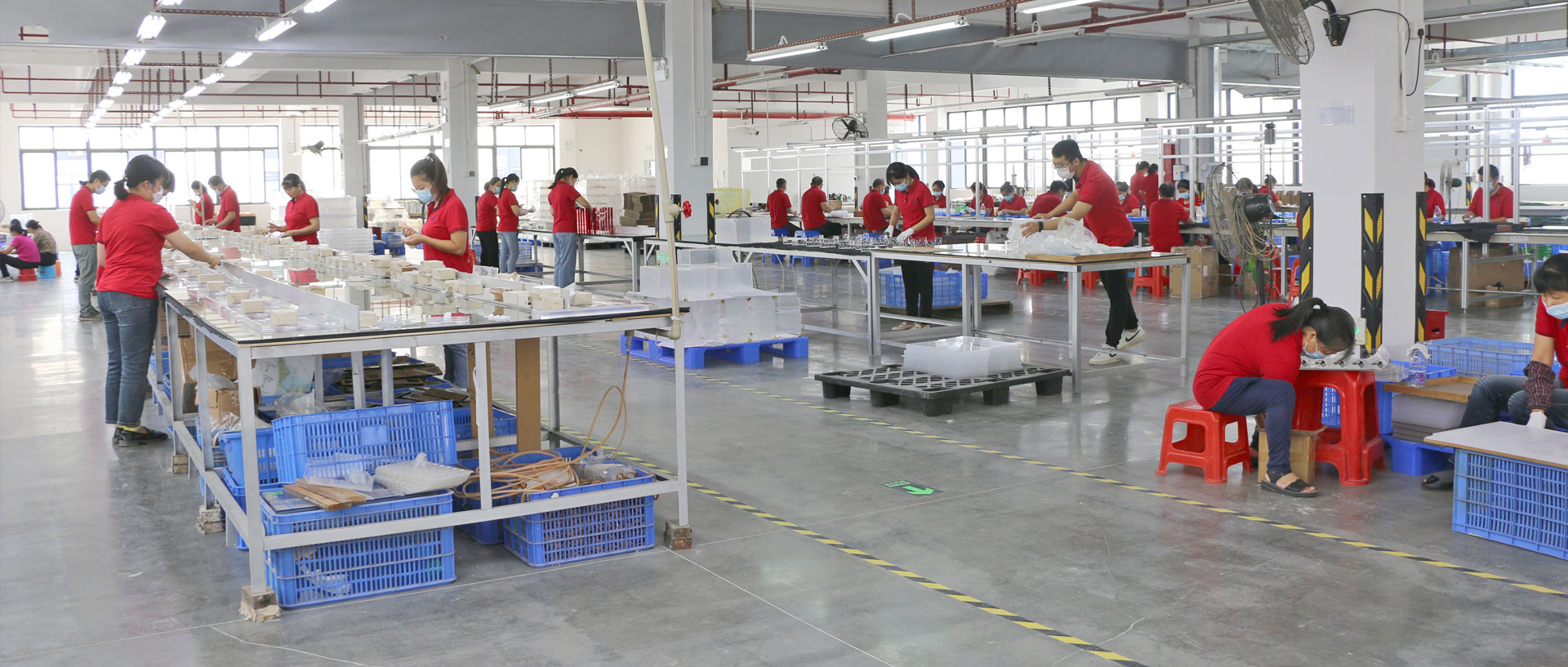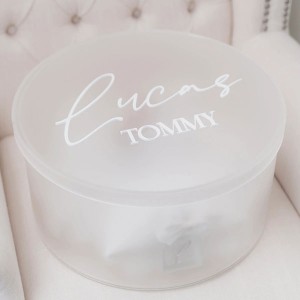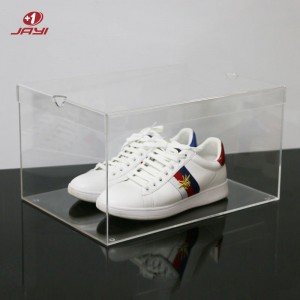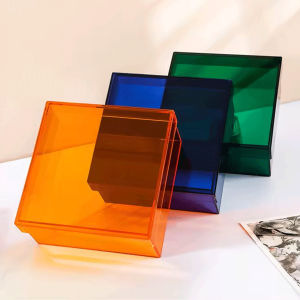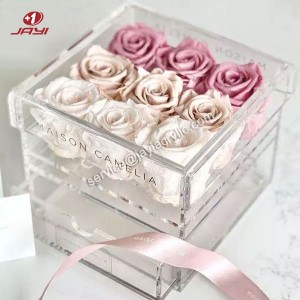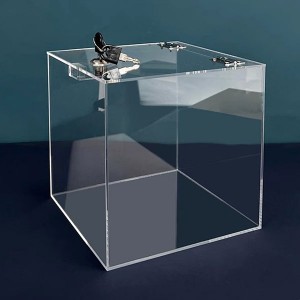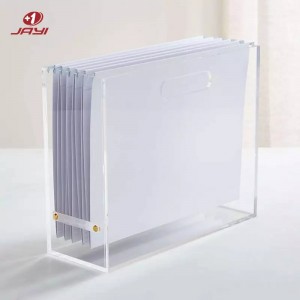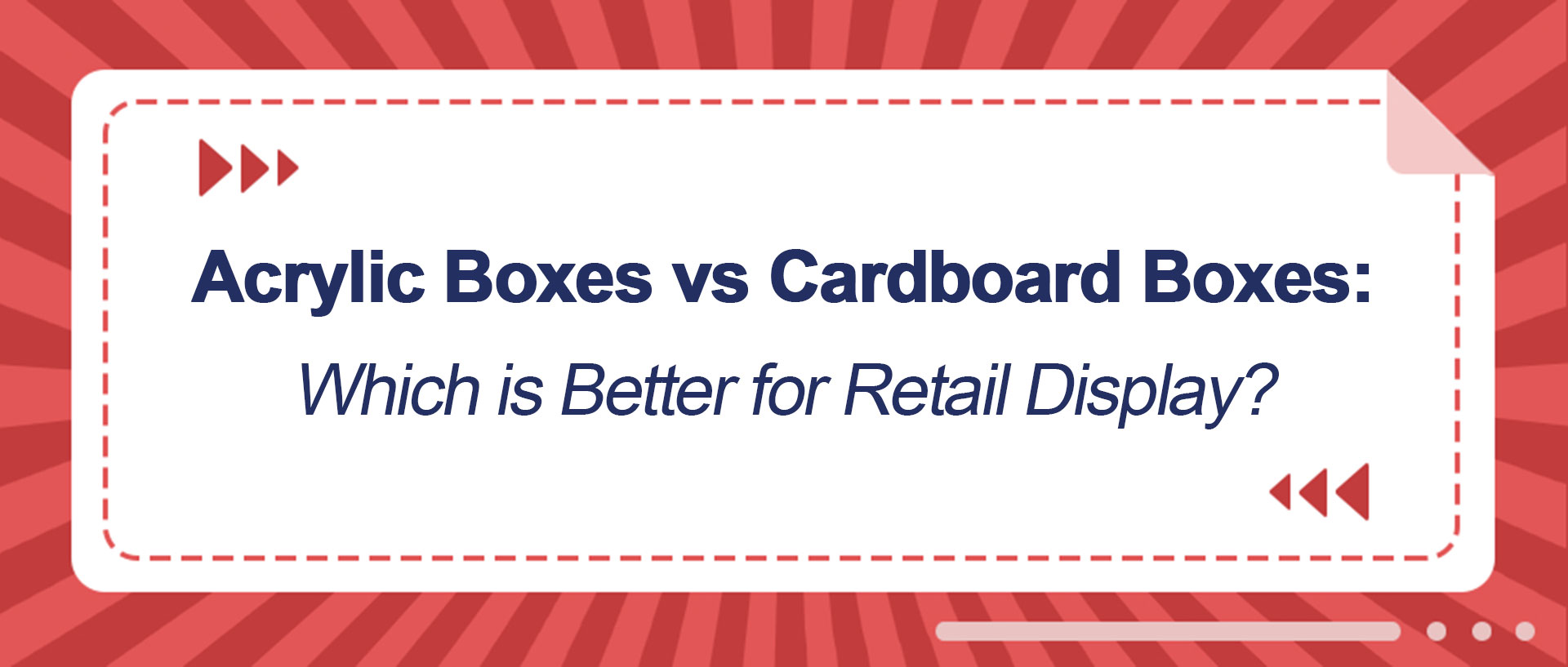
When it comes to retail display, choosing the right type of packaging is crucial. Not only does it protect your products, but it also plays a significant role in attracting customers and enhancing your brand image. Two popular options for retail display packaging are acrylic boxes and cardboard boxes. Each comes with its own set of advantages and disadvantages.
In this article, we will explore the features, benefits, and drawbacks of both to help you decide which is better for your retail display needs.
The Importance of Retail Display Packaging
Retail display packaging is more than just a protective covering for your products.
It serves as a silent salesperson, communicating your brand's message, values, and quality to potential customers.
The right packaging can make your products stand out on the shelves, increase sales, and ultimately contribute to your business's success.
Communicating Your Brand's Message
Retail display packaging is an essential component in conveying your brand's story.
The colors, design, and material of your packaging can evoke emotions and create a connection with your target audience.
A well-designed package can communicate luxury, sustainability, innovation, or any other brand value that resonates with your customers.
Enhancing Product Visibility
Effective retail packaging enhances product visibility, making it easier for consumers to find and choose your products over competitors'.
It can highlight the unique features or benefits of your product, drawing attention to what sets it apart.
The right packaging design can transform an ordinary shelf into an engaging display that captures shoppers' attention.
Driving Purchasing Decisions
Packaging plays a crucial role in the consumer's decision-making process.
It can serve as the final nudge that convinces a shopper to make a purchase.
Eye-catching packaging can trigger impulse buys, while informative packaging can reassure customers about the quality and benefits of the product, ultimately influencing their buying decision.
Acrylic Boxes: The Clear Choice
Acrylic boxes, often referred to as clear display boxes, are made from a type of plastic known for its clarity and durability.
Here are some advantages of using acrylic boxes for retail display:
Advantages of Acrylic Boxes
Acrylic boxes offer several distinct benefits that make them a popular choice for retailers looking to showcase their products effectively.
Transparency
Acrylic boxes offer excellent transparency, allowing customers to see the product inside without opening the packaging.
This can enhance the visual appeal and encourage impulse buying.
The clarity of acrylic ensures that the product is the focal point, creating a seamless display that attracts attention.
Durability
Acrylic is a strong material that is resistant to impact and breakage, making it ideal for protecting delicate or high-value items.
This durability ensures that the packaging remains pristine even in high-traffic retail environments, providing long-term protection for your products.
Aesthetic Appeal
The sleek and modern look of acrylic boxes can elevate the perceived value of your products and create a premium shopping experience.
Acrylic's glossy finish adds a touch of sophistication, making it suitable for luxury items or high-end brands.
Customization
Acrylic boxes can be easily customized in terms of size, shape, and design, allowing for creative and unique packaging solutions that reflect your brand's identity.
Customization options can include branding elements such as logos, colors, and even intricate designs that enhance brand recognition.

Reusable
Acrylic boxes are reusable, which can be an eco-friendly packaging option if customers choose to repurpose them.
Their durability means they can serve secondary purposes, such as storage or decoration, extending their lifecycle and reducing waste.
Disadvantages of Acrylic Boxes
Despite their many benefits, acrylic boxes also have some drawbacks:
Cost
Acrylic boxes tend to be more expensive than cardboard boxes, which can be a consideration for businesses with tight budgets.
The higher cost is often due to the quality of materials and the manufacturing process required to produce acrylic packaging.
Environmental Impact
Although acrylic is reusable, it is not biodegradable, which may not align with eco-friendly initiatives.
This can be a critical factor for brands committed to sustainability, as acrylic's environmental footprint is larger compared to more biodegradable alternatives.
Susceptibility to Scratches
Acrylic can be prone to scratching if not handled with care, which could affect the overall appearance of the packaging.
Retailers need to ensure proper handling and storage to maintain the pristine look of acrylic boxes.
Cardboard Boxes: The Classic Choice
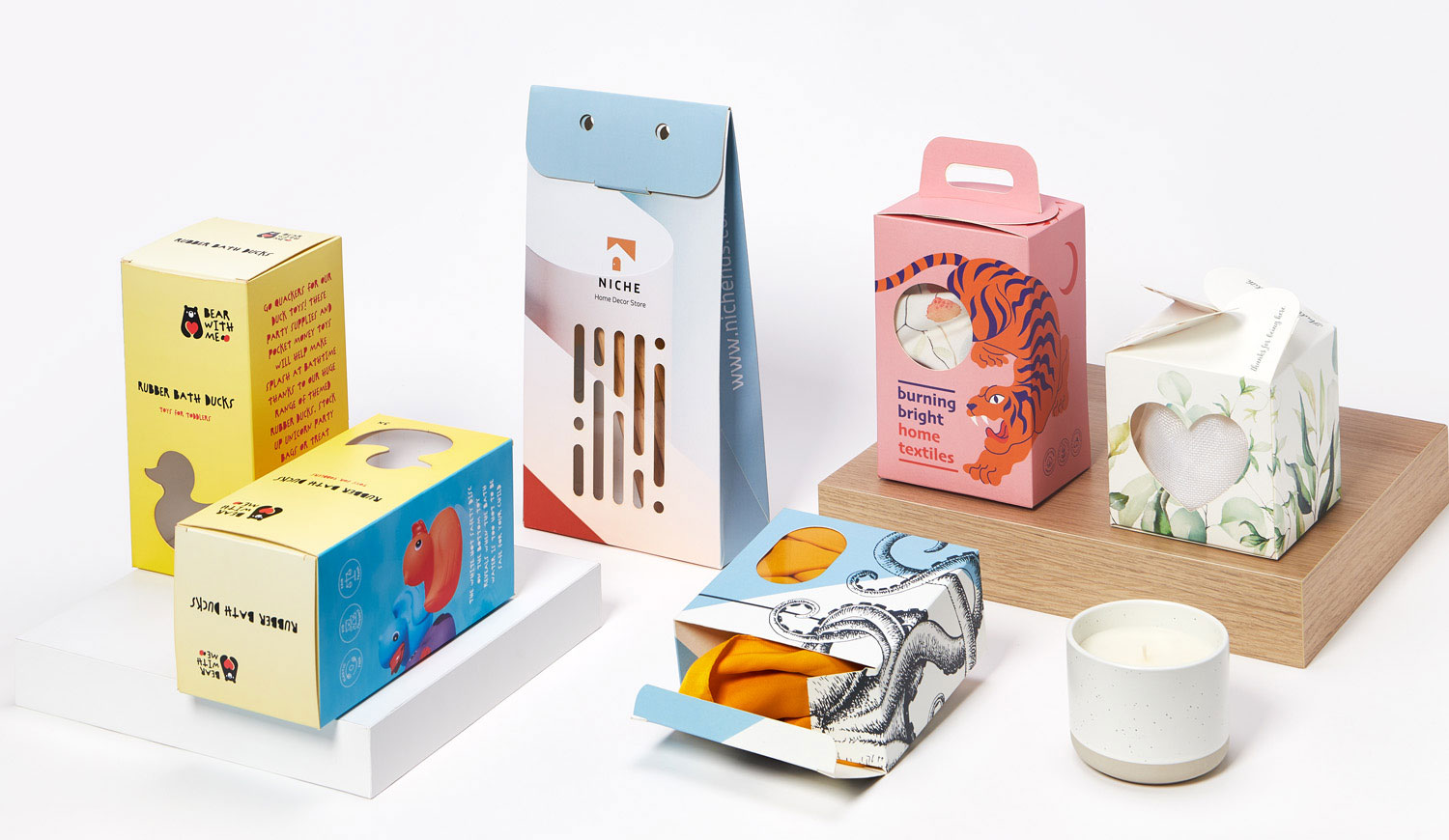
Cardboard boxes have been a staple in retail packaging for decades. Here are some reasons why they remain a popular choice:
Advantages of Cardboard Boxes
Cardboard boxes offer a range of benefits that have sustained their popularity in the retail sector.
Cost-Effective
Cardboard boxes are generally more affordable than acrylic boxes, making them a cost-effective solution for businesses of all sizes.
This affordability makes cardboard a practical choice for large-scale product lines or startups operating on limited budgets.
Eco-Friendly
Cardboard is biodegradable and recyclable, making it a sustainable choice for businesses looking to reduce their environmental footprint.
Cardboard's recyclability aligns with consumer demand for eco-friendly packaging solutions, supporting brands' sustainability goals.
Versatility
Cardboard boxes can be easily printed with brand logos, colors, and designs, offering ample opportunities for branding and customization.
This versatility allows businesses to create distinctive packaging that reflects their brand identity and appeals to their target market.
Lightweight
Cardboard is lightweight, which can reduce shipping costs and make handling easier for both retailers and customers.
This can be especially beneficial for e-commerce businesses looking to minimize shipping expenses while ensuring safe delivery.
Protective
Despite being lightweight, cardboard offers sufficient protection for many products, providing a balance between cost, weight, and durability.
It can cushion items during transport, minimizing the risk of damage.
Disadvantages of Cardboard Boxes
While cardboard boxes are widely used, they also come with some limitations:
Limited Visibility
Unlike acrylic boxes, cardboard boxes do not offer visibility of the product inside unless designed with windows or cutouts.
This limitation can affect product display, making it necessary to rely on external design elements to attract attention.
Less Durable
Cardboard is less durable than acrylic, making it susceptible to damage from moisture, impact, and rough handling.
This can be a concern for products that require robust protection or for packaging in high-moisture environments.
Limited Reusability
Although recyclable, cardboard boxes are less likely to be reused by customers compared to acrylic boxes.
Cardboard's shorter lifespan can lead to increased waste if not properly recycled by consumers.
Acrylic vs Cardboard: Which Should You Choose?
When deciding between acrylic boxes and cardboard boxes for retail display, consider the following factors:
Product Type
If your product benefits from visibility, such as cosmetics or collectibles, acrylic boxes might be a better choice.
The transparency of acrylic showcases the product effectively, making it ideal for items where appearance is a significant selling point.
For products where protection is more important than visibility, cardboard may suffice, offering a balance of cost and durability.
Budget Considerations
Consider your budget constraints.
If cost is a primary concern, cardboard boxes offer a more economical option without compromising on basic functionality.
Acrylic boxes, while more expensive, can provide a higher perceived value, potentially justifying the cost for premium products.
Brand Image
Think about how you want your brand to be perceived.
Acrylic boxes offer a high-end look, which can enhance the brand image of luxury products.
In contrast, cardboard boxes can convey a more eco-friendly or rustic image, appealing to environmentally conscious consumers or those seeking a more natural aesthetic.
Environmental Considerations
If sustainability is a priority for your business, cardboard boxes align better with eco-friendly packaging initiatives.
Their recyclability and biodegradability make them a preferred choice for brands committed to reducing environmental impact.
However, consider the potential for reusability with acrylic, which can also support sustainability goals if repurposed by consumers.
Customization Needs
If you require highly customized packaging, both materials offer customization options, but acrylic provides a more premium look.
Evaluate the extent of customization needed to reflect your brand identity and meet consumer expectations.
Acrylic can offer intricate designs and branding elements, while cardboard allows for creative print designs and color applications.
Jayiacrylic: Your Leading China Custom Acrylic Boxes Manufacturer And Supplier
Jayi Acrylic is a professional acrylic packaging manufacturer in China.
Jayi’s Custom Acrylic Box solutions are meticulously crafted to captivate customers and showcase products most appealingly.
Our factory holds ISO9001 and SEDEX certifications, ensuring premium quality and ethical manufacturing standards.
With over 20 years of experience collaborating with leading global brands, we deeply understand the importance of designing custom boxes that enhance product visibility and drive sales.
Our tailor-made options guarantee that your merchandise, promotional items, and valuables are presented flawlessly, creating a seamless unboxing experience that fosters customer engagement and boosts conversion rates.
FAQ: Acrylic Boxes vs Cardboard Boxes for Retail Display

What Are the Main Differences Between Acrylic Boxes and Cardboard Boxes?
Acrylic boxes are made of transparent plastic, offering high clarity, durability, and a premium aesthetic—ideal for showcasing products that need visual presentation (e.g., cosmetics, collectibles). However, they come with higher costs and lower eco-friendliness.
Cardboard boxes, made of paper, are cost-effective, recyclable, and lightweight, suitable for items with low visibility requirements (e.g., daily goods). Their durability and aesthetics are more limited, often requiring window cutouts to enhance display.
Which Packaging Is More Eco-Friendly?
Cardboard boxes are greener. Made from renewable materials, they are fully biodegradable and recyclable, aligning with sustainable consumption trends—perfect for eco-conscious brands.
While acrylic can be reused, it is a non-biodegradable plastic, carrying a heavier environmental footprint.
For brands balancing practicality and sustainability, recycled acrylic or an emphasis on cardboard recycling are viable compromises.
Which Should I Choose on a Tight Budget?
Prioritize cardboard boxes. They cost significantly less than acrylic, making them ideal for bulk purchases or startups.
For example, the price of a cardboard box may be only 1/3 to 1/2 that of an acrylic one of the same size, with lower customization costs.
To boost display appeal, add transparent windows or creative prints to cardboard packaging, balancing affordability and attractiveness.
What Products Are Best Suited for Acrylic Boxes?
High-value items that rely on appearance, such as luxury goods, jewelry, electronics, or art collectibles.
Acrylic’s transparency highlights product details and enhances visual appeal, while its impact resistance protects fragile items.
Beauty brand sets or limited-edition products also use acrylic packaging to create a premium feel and drive impulse purchases.
What Are the Disadvantages of Cardboard Boxes for Retail Display, And How Can They Be Addressed?
Cardboard boxes lack visibility and are prone to moisture damage.
To showcase products, design "windowed" cardboard or print product images.
For durability, choose thick corrugated paper or apply a film coating.
While cardboard suits inner packaging and shipping, for shelf display, it compensates for visual limitations with vibrant colors, brand storytelling copy, or three-dimensional structural designs.
Conclusion
Both acrylic boxes and cardboard boxes have their unique advantages and are suitable for different retail display needs.
By weighing the pros and cons of each material, considering your product, budget, brand image, and environmental goals, you can make an informed decision that enhances your retail display and supports your business objectives.
Whether you opt for the clarity of acrylic or the sustainability of cardboard, the right packaging choice can make all the difference in attracting customers and boosting sales.
Carefully assess your priorities and align your packaging choice with your brand's values and market positioning to maximize the impact on your retail success.
If You Are in Business,You May Like:
Post time: Jun-12-2025


